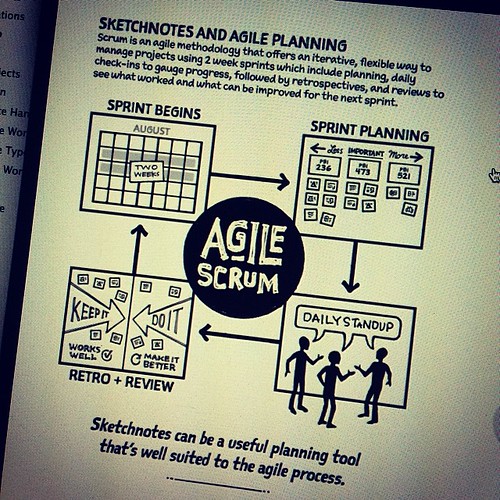Principles of Agile Methodologies Explained
Agile methodologies have revolutionized how software development teams work, putting emphasis on individuals, customer collaboration, and iterative, incremental development. This blog post will provide an extensive explanation of agile principles, bringing insights from the perspective of a DevOps engineer and programmer. The content aims to be very detailed, academic in tone, and backed by relevant, hyperlinked references.
Agile Methodologies and Their Impact
Agile methodologies focus on delivering valuable software incrementally, promoting customer satisfaction, team collaboration, and flexibility. The Agile Manifesto introduced twelve guiding principles that have since become foundational for many software projects, particularly those needing adaptability and responsiveness to change.
According to the Agile Manifesto, these twelve principles distinguish agile processes from traditional approaches. We will explore each principle in detail, explaining its significance for developers, project managers, and customers.
Delivering Early and Continuously
Satisfy the Customer Through Early and Continuous Delivery
The primary goal of agile methodologies is to deliver functional and useful software in short time frames—often within weeks. This approach eliminates the uncertainty and dissatisfaction often associated with long project timelines. Delivering a working product early builds trust with the customer and creates opportunities for feedback and iteration.
Read more about the Agile Manifesto
Importance of Early Delivery
In practice, delivering early allows developers and business stakeholders to collaborate, adjust priorities, and refine the features of a product in response to real-world user feedback. This iterative approach encourages constant alignment between developers and business needs.
- Early releases reduce risks by validating core functionality before investing too much effort in additional features.
- Continuous feedback from real users makes the software more aligned with user expectations.
Agile Development - A Continuous Improvement Approach
Embracing Change
Welcome Changing Requirements
In agile, change is expected and welcomed—even late in the development cycle. By viewing evolving requirements as opportunities, agile development can provide competitive advantages that better meet customer needs. This flexibility makes agile well-suited to projects with shifting business landscapes or where user feedback drives product iterations.
Designing for Change
Agile methodologies support flexibility by encouraging modular designs and avoiding rigid specifications that hinder future adjustments. The mindset is to build products that are resilient to change, making refactoring and enhancement easier.
- Agile design patterns, such as microservices, allow individual components to evolve independently, fostering adaptability.
- Collaborating with stakeholders throughout development ensures expectations evolve together with the software.
Embracing Change with Agile Methods
Frequent Delivery of Functional Software
Deliver Working Software Frequently
Delivering functional software at regular intervals, typically between two weeks and two months, ensures that stakeholders see progress and can interact with the evolving system. This frequent delivery keeps the customer engaged, motivated, and able to provide real-time feedback.
Benefits of Frequent Releases
The key to frequent delivery lies in breaking down features into smaller, manageable pieces that can be completed and tested within each iteration. This agile practice aligns well with DevOps principles that emphasize continuous integration and delivery.
- Small, functional releases help mitigate risks by making incremental progress and avoiding large-scale failures.
- Real-time user interactions provide a concrete measure of project success rather than relying on abstract documents or reports.
Continuous Delivery in Agile Frameworks
Business and Developer Collaboration
Continuous Collaboration
To maximize project success, business leaders and developers must work together closely throughout the development cycle. Agile methodologies stress that the client’s input is essential to align the technical solution with business goals effectively.
- Developers benefit from direct business feedback, which helps refine system functionalities to fit business needs.
- Regular meetings, such as sprint reviews and backlog grooming, ensure constant alignment between development and business priorities.
The Importance of Developer-Business Interaction
Motivated Individuals and Efficient Communication
Principle 5 & 6: Build Projects Around Motivated Individuals and Emphasize Face-to-Face Communication
Motivation within the development team is crucial for an agile project to succeed. Providing the right environment and support enables developers to excel. Furthermore, face-to-face communication is considered the most effective way to share knowledge and resolve misunderstandings quickly.
Motivated Teams and Success
Teams that are empowered to make decisions and trusted to execute tasks are more likely to produce high-quality software. Agile frameworks like Scrum create environments where teams are self-organizing, building a sense of ownership and accountability.
- Clear goals and support from management foster an environment where team members feel motivated and valued.
- Regular stand-ups and open communication channels reduce misunderstandings and foster quicker problem-solving.
Building Motivated Agile Teams
The principles of agile methodologies are designed to foster a dynamic, flexible approach to software development that prioritizes customer satisfaction, team collaboration, and continuous improvement. By focusing on these principles, agile teams are better equipped to navigate the complexities and changing demands of modern software projects. Embracing agile methodologies offers a path to better quality software, delivered on time, that meets user needs.
To delve further into agile methodologies and their practical implementation, please explore the references provided throughout this post for a more comprehensive understanding.

